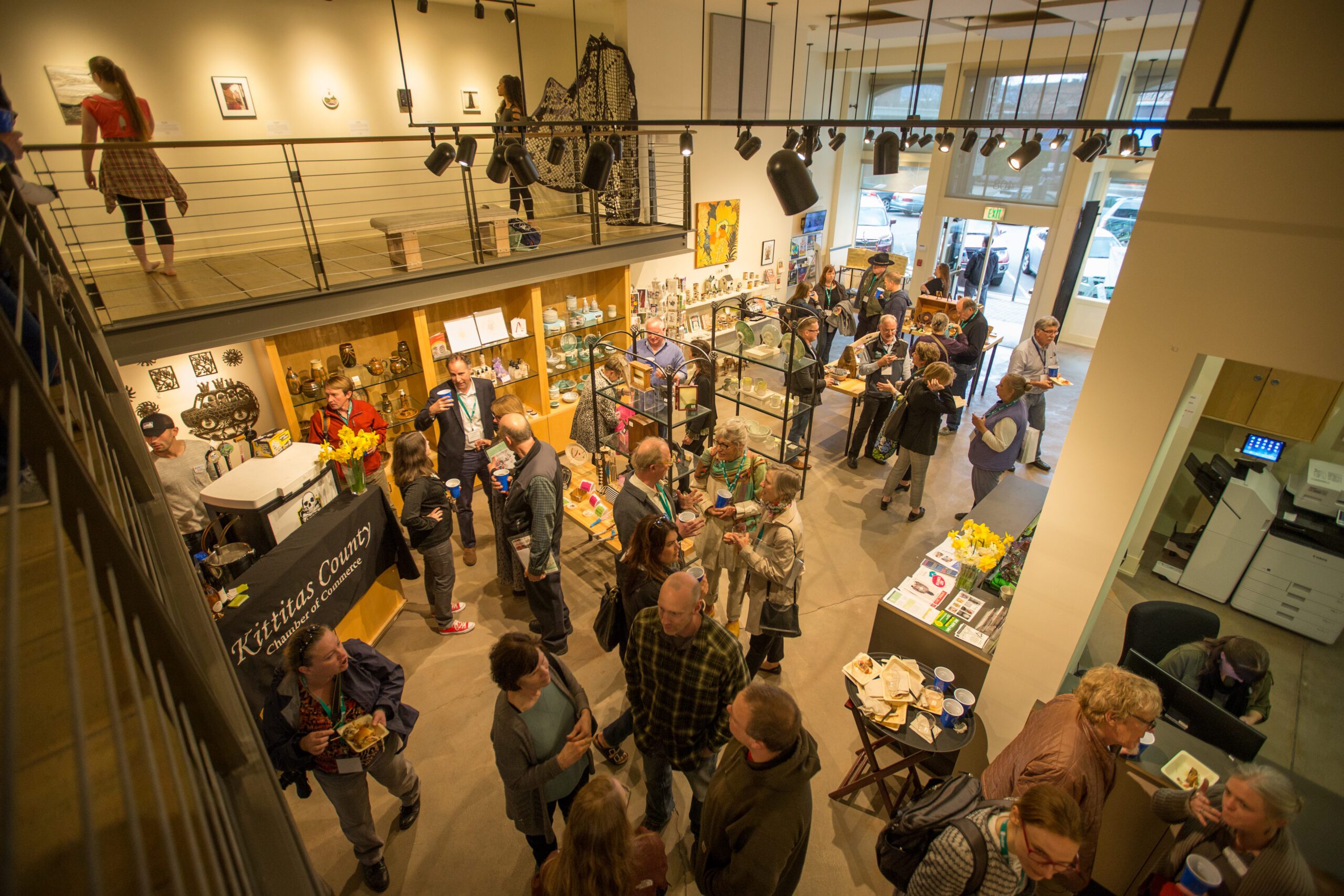Why Main Street Matters to the State

By Breanne Durham, Washington Main Street Director
We (maybe it’s fairer to say I) have a habit of shrinking back from the question of where Main Street funding comes from; to answer “the state” can feel like an admission of need or a lack of some sort of commercial value. I tended to do this as a local Main Street director years ago when asked if we received any city funding (we did). I did this despite the strong belief that the public sector is the greatest benefiter of a strong downtown district, and therefore the greatest benefiter of the work Main Street does to create and care for places that businesses and residents can thrive.
With the release of a recent report that studied and outlined the impact of Main Street in Washington State, I can now turn that belief of Main Street’s positive return into stone cold fact: Main Street generates a positive return on investment for the State of Washington. This rule applies to cities, too – when the private sector and the public sector both contribute financially to their local Main Street program, that partnership and that investment yield positive community, economic, and fiscal returns much larger than the initial contributions.
It’s important to understand how these three types of Main Street impacts – community, economic, fiscal – are linked. Main Street programs across the state build community and a strong sense of place by creating a vibrant environment in which people want to spend their time and invest. This community impact directly supports the work that Main Street programs do to help generate more visitors and sales revenue for downtown businesses, which in turn creates more jobs and provides opportunities for small businesses. That positive economic impact translates directly into a positive fiscal impact to the state – increased business activity generates additional sales tax, property tax, and other types of revenue, which helps fund programs that serve all residents.
Since I outlined how Main Street programs positively impact their communities and economies in previous articles, let’s jump right into that sexy fiscal impact data*!
Between 2011-2019, Main Street activity generated $28.9 million in cumulative state taxes. The largest revenue source is sales tax, totaling $22.5 million more in Main Street districts since 2011 than would be expected without a local Main Street program.
The state contributes to Main Street in two ways. The largest source of funding is the Main Street Tax Credit Incentive Program, which provides a 75% credit on state B&O or Public Utility Tax for donations to Washington Main Street Communities. That means that when Washington businesses donate to their local Main Street program, they get 75% of their contribution back in the form of tax credits, courtesy of the state. The state also provides annual programmatic funding for the Washington State Main Street Program through the Department of Archaeology & Historic Preservation’s general budget.
With $18.3 million cumulative investment in Main Street between 2011-2019 and over $28.9 million cumulative state tax revenue generated by Main Street activity during that time, the State of Washington saw a profit of $10.6 million in net impact over the course of nine years.
For every dollar Washington State has invested in Main Street, it has received $1.58 back.
While a 58% return on investment is already impressive, it’s reasonable to assume this is a wild underestimation of the actual positive impacts of Main Street to the State of Washington, given that this doesn’t account for the secondary impacts of Main Street work, such as property rehabilitation, consumer confidence, and other quality of life factors. An indication of the true reach of Washington Main Street comes from the sheer number of businesses, employees, and revenue it represents (2019 figures):
- 6,850 businesses in Washington Main Street Community districts
- 65,260 people employed within those districts
- $9.7 billion in revenue generated from those districts
We learned so much about Main Street’s impact on Washington State through this study. While, of course, we’re proud as punch to share compelling data points related to jobs, revenue, and growth, perhaps my favorite finding of the study is this one: 1 in 4 Washington residents lives within five miles of a Washington Main Street Community. That’s nearly 2 million Washingtonians who are able to benefit from welcoming historic neighborhoods and thriving commercial districts in the places they call home. These are places that are cared for deeply for all Washingtonians.
*Data represents the 33 designated Main Street Communities in Washington State as of 2019. The Washington Main Street network currently represents 66 towns, includes 36 designated Main Street Communities and 30 Affiliates.
Photo credit: Otto Gruele (photo of Gallery One, downtown Ellensburg)
Main Street Impact Series
This is part two of a three-part series where we dive into the types of impact that the study covered: social (communities), economic (businesses), and fiscal (state government). We’re tremendously proud of the communities that are part of the Washington Main Street network and hope you’ll join us in celebrating the many ways they are building local resiliency.
About Main Street
Main Street is a nationwide movement with a 40-year history of providing a useful framework and network for local community builders. The Main Street Approach encourages partners to come together to enhance a historic downtown district through a focus on Design, Economic Vitality, Outreach, and Promotions. In Washington State, local Main Street organizations are supported by the Washington State Main Street Program, a program of the Department of Archaeology & Historic Preservation managed by the Washington Trust for Historic Preservation. Learn more at www.preservewa.org/mainstreet.
